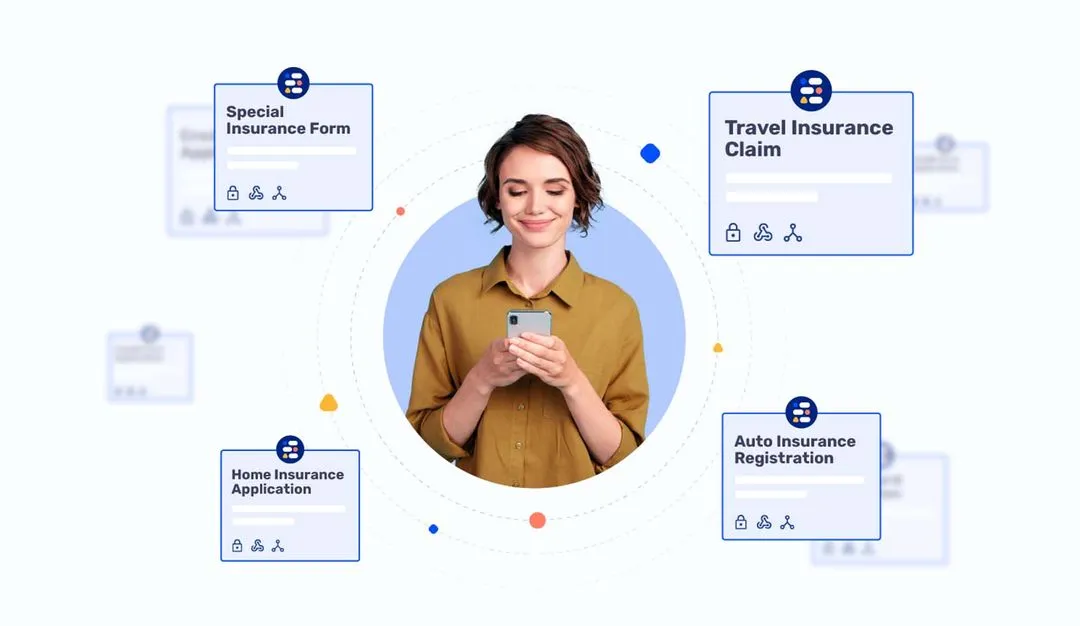In the digital age, the insurance industry faces numerous challenges, from evolving customer expectations to the integration of complex technological solutions. Customers now demand seamless, efficient, and personalized interactions across various communication channels. This blog post explores the importance of unified customer interactions in the insurance sector, detailing the benefits and the key strategies for implementing such a framework.
Understanding the need for unified customer interactions
The modern insurance customer juggles multiple digital touchpoints daily. From social media to mobile apps and call centers, the pathways to customer engagement are diverse. However, these numerous channels often lead to fragmented customer experiences due to inconsistent information and varying service levels. This fragmentation not only diminishes customer satisfaction but also impacts operational efficiency and increases the cost of service delivery.
Unified customer interactions ensure a cohesive customer experience, regardless of the channel. By streamlining communication across all platforms, insurers can deliver consistent messages, policies, and service standards. This not only enhances customer satisfaction but also builds trust and loyalty, which are crucial in a competitive market.
Deep dive into unified customer interactions

Integrating technologies across platforms
The foundation of unified customer interactions is the seamless integration of various IT systems and platforms that handle different facets of customer engagement. Insurance companies typically utilize a plethora of systems including CRM for customer data, CCM for communication, BPM for process management, and others like document management systems and analytics tools.
The challenge is that these systems often operate in silos, which can create a disjointed experience for the customer. For example, a customer might receive different information from the call center versus what is available online or in an email communication. This can lead to confusion and dissatisfaction.
A dynamic interaction layer like EasySend bridges these gaps. It overlays on top of existing systems, pulling necessary data and functionalities into a single interface. This ensures that all customer-facing and backend processes are aligned, which enhances data consistency and interaction quality across all channels.
The role of omnichannel strategies
An omnichannel strategy is more than just having multiple channels for customer interaction; it’s about creating a cohesive, consistent, and continuous customer journey across all these channels. Here’s what that involves:
- Continuity: A customer can start an interaction on one channel, such as filling out an insurance claim form online, and seamlessly continue it on another, like finalizing details over the phone with a representative, without having to repeat previously given information.
- Consistency: Every interaction, whether on the app, website, or in-person, should feel like it comes from the same company. Branding, messaging, and service quality should be uniform, helping to build a reliable and trustworthy image.
- Context-aware: Every channel should have access to the full context of past interactions. This means that if a customer calls in to ask about a query they raised through email, the representative should have immediate access to that history.
Leveraging data analytics
Unified interactions also allow insurance companies to leverage data analytics more effectively. With all customer data flowing through a single system, analytics can provide more accurate insights into customer behavior, preferences, and pain points. Here are a few applications:
- Personalization: Based on interaction history, insurers can tailor communications and offers to individual customers, such as suggesting specific insurance products based on recent life events.
- Predictive analytics: By analyzing interaction patterns, insurers can predict certain customer needs or issues before they become bigger problems, allowing proactive engagement.
- Efficiency improvements: Analytics can identify bottlenecks or common issues across customer journeys, highlighting opportunities to streamline processes and improve customer satisfaction.
Customer-centric design
This involves rethinking processes from the ground up to focus on the customer’s needs and experiences. Insurance companies should map out all the touchpoints in a customer’s journey, from initial inquiry to policy renewal, and optimize each one to ensure it contributes positively to the overall experience. This might involve simplifying forms, reducing steps in a process, or providing more relevant information at each stage.
Security and compliance
With the integration of multiple systems and the handling of sensitive personal and financial information, security and compliance are paramount. Insurance companies must adhere to various regulations, such as GDPR in Europe or HIPAA in the United States, depending on the nature of the data and the geography of operation. Robust security measures like data encryption, secure access protocols, and regular audits should be implemented to protect customer data and ensure compliance.
The benefits of a unified customer interaction platform
By moving toward unified customer interactions, insurance companies can not only improve their customer engagement but also gain operational efficiencies that can lead to cost savings and improved service delivery. It's a strategic investment that aligns with the digital transformation initiatives prevalent in many industries today, positioning companies better in the competitive market.
- Enhanced Customer Experience: Customers receive consistent information and service quality across all channels, leading to higher satisfaction and reduced frustration.
- Increased Operational Efficiency: Unified systems reduce redundancy and streamline processes, allowing for quicker responses and lower operational costs.
- Improved Data Management: Integrating interactions across multiple channels enables better data collection, analysis, and utilization, enhancing decision-making and strategic planning.
- Scalability and Flexibility: A unified approach allows for easier scaling of operations and adaptability to new technologies or market changes.
Ultimately, the successful implementation of unified customer interactions in the insurance sector relies on leveraging technology that is specifically designed to facilitate these complex requirements. With the right tools, insurers can transform their customer engagement models to be more efficient, effective, and aligned with modern consumer expectations, driving both customer satisfaction and business growth. By investing in the right technology, insurance companies can ensure they not only keep pace with the industry's evolution but also set the standards for exceptional customer service.





